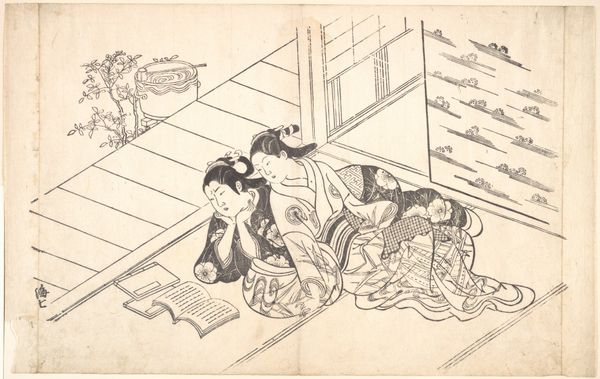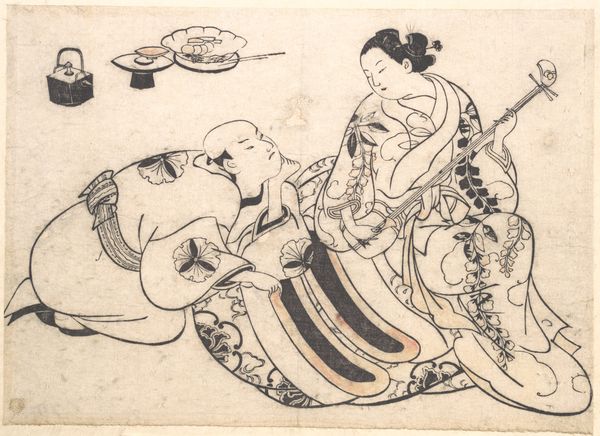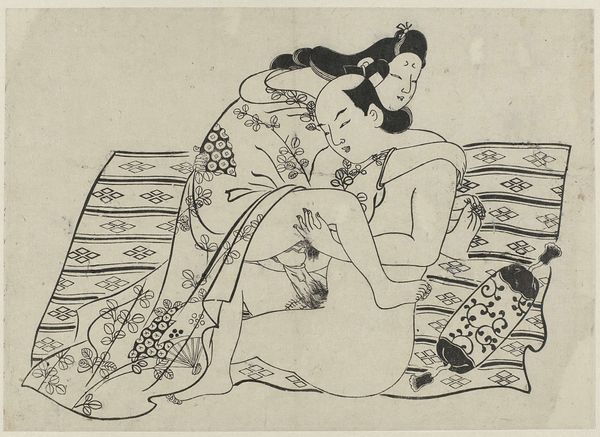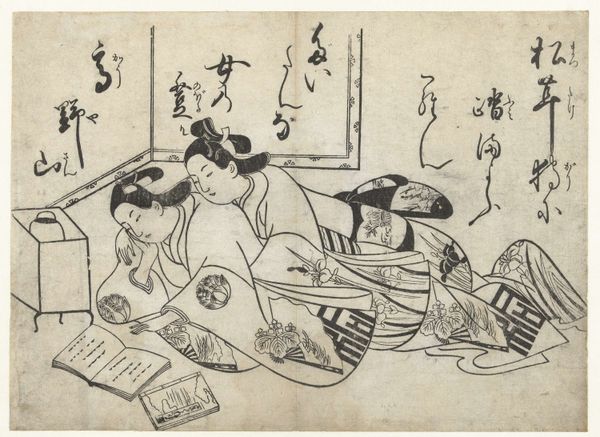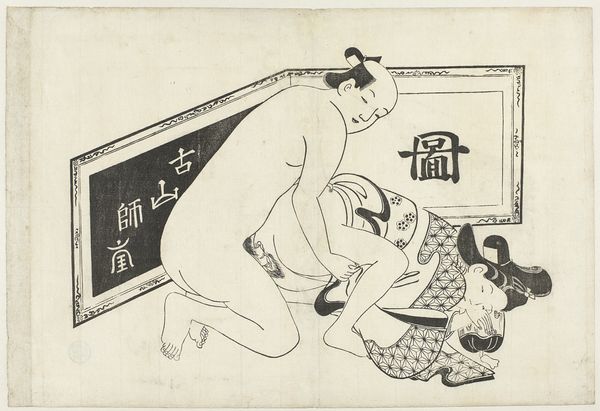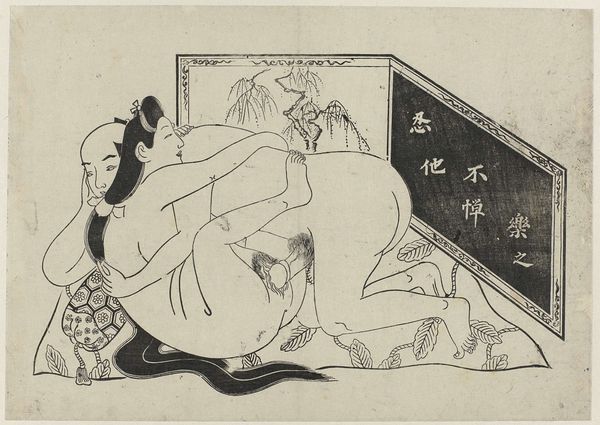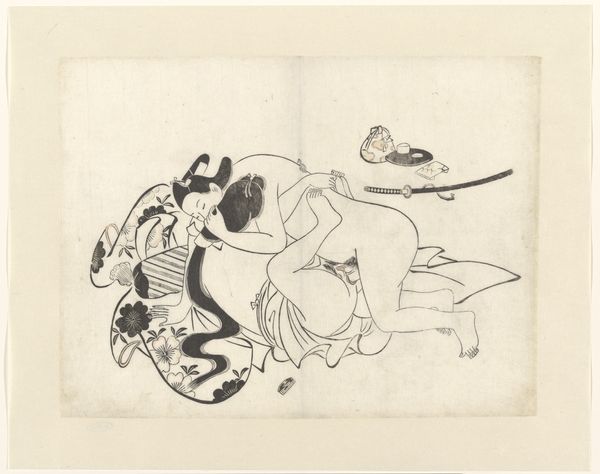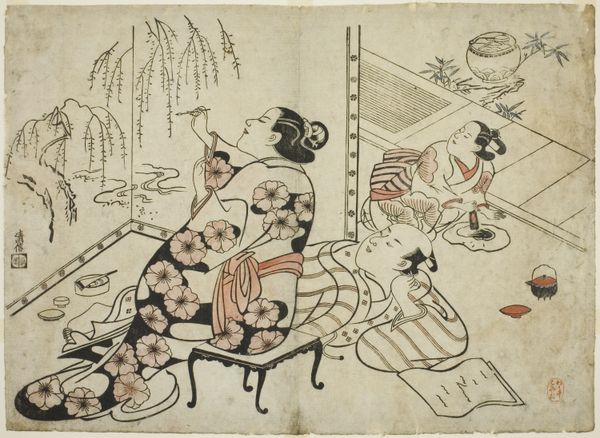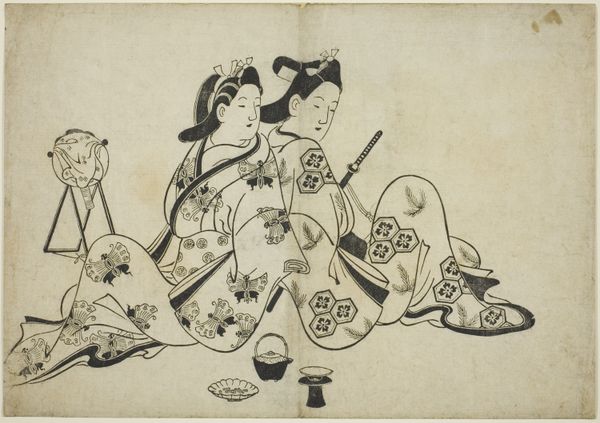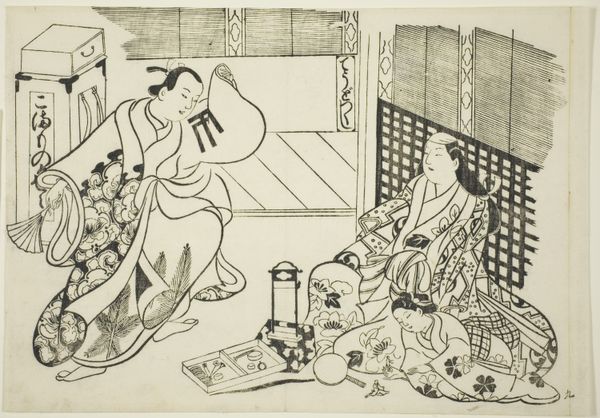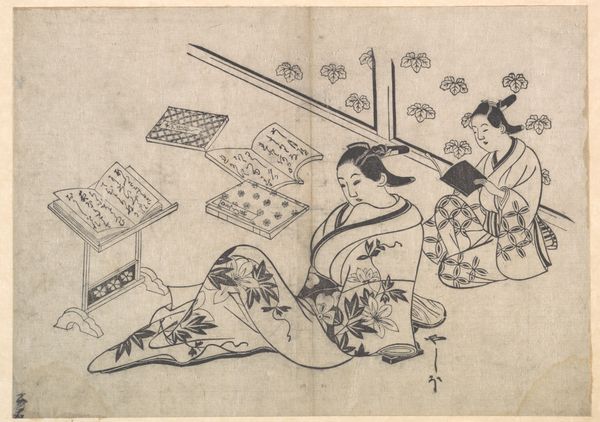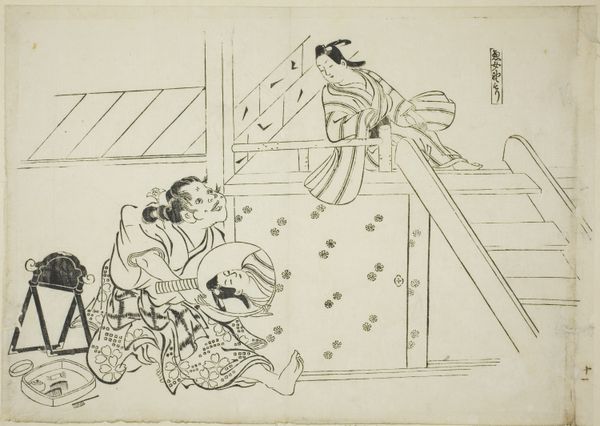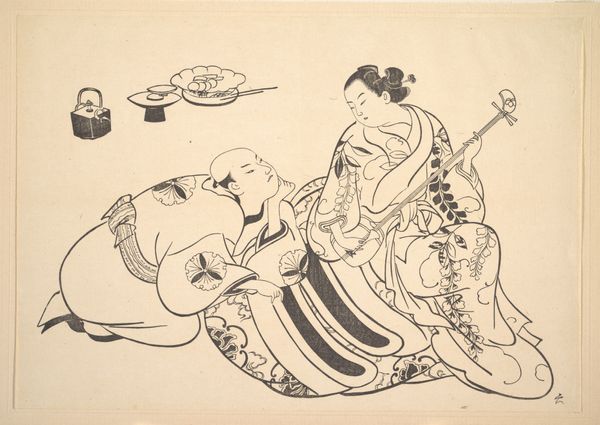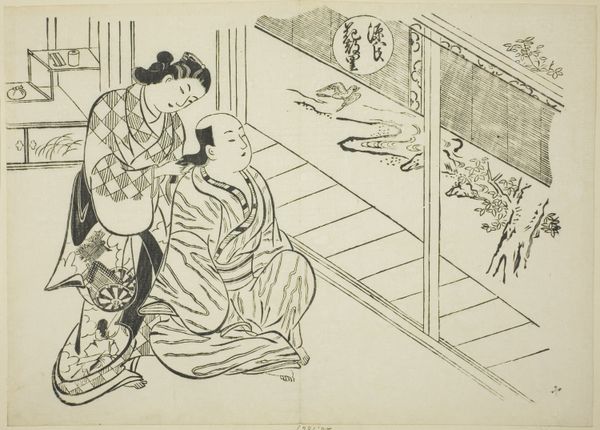
(Lovers as Mitate of Daruma Crossing the Yangtse River on a Reed) c. early 18th century
0:00
0:00
print, paper, ink-on-paper, ink, woodblock-print
# print
#
asian-art
#
ukiyo-e
#
figuration
#
paper
#
ink-on-paper
#
ink
#
woodblock-print
#
line
#
genre-painting
Dimensions: 8 5/8 x 12 1/16 in. (21.9 x 30.7 cm) (image, sheet)14 x 17 15/16 in. (35.5 x 45.5 cm) (mat)
Copyright: Public Domain
This woodblock print was made by Okumura Masanobu in Japan, sometime in the first half of the 18th century. It depicts two lovers in a domestic setting, but it also alludes to the legend of Daruma, the founder of Zen Buddhism, crossing the Yangtze River on a reed. The image is a *mitate*, a visual pun that superimposes one subject onto another, a common practice in Japanese art of this time. The courtesan's robe bears Daruma's image, and the poem slip, which contains the lover’s vows, is a coded reference to the famous crossing. Masanobu ran one of the most influential printmaking workshops in Edo, present-day Tokyo, and was instrumental in developing new printing techniques. The *mitate* genre appealed to the educated merchant class, who enjoyed these playful and erudite allusions. The print is a testament to the increasing sophistication and secularization of Japanese art during the Edo period, which had a self-consciously progressive attitude to traditional art subjects. To truly understand it, we need to look at the publishing history and the cultural context in which the artist was working.
Comments
No comments
Be the first to comment and join the conversation on the ultimate creative platform.
